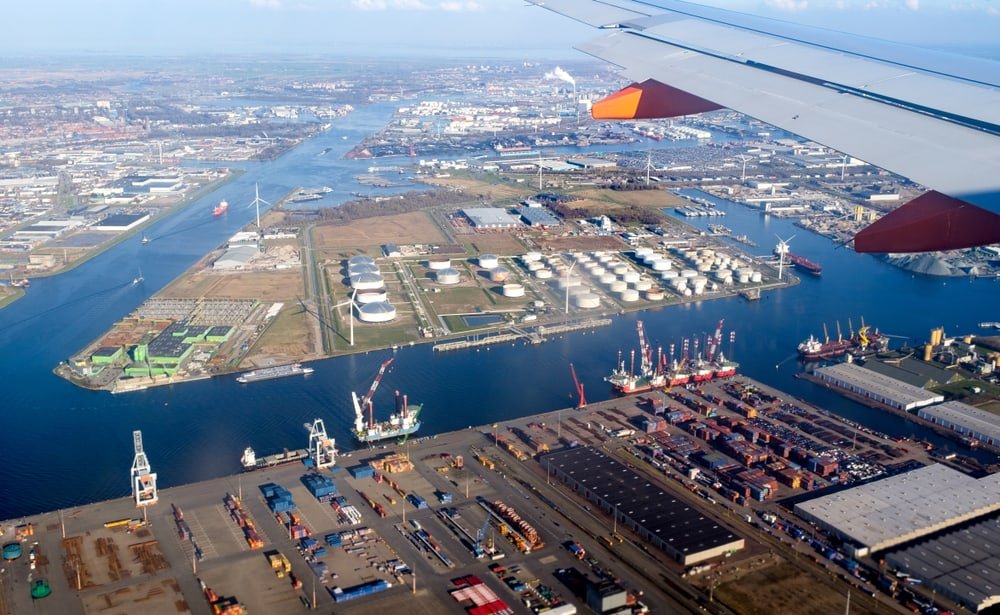For the first time in several years, the Port of Amsterdam saw a significant decline in transshipment volumes in 2020, citing both coronavirus and energy transition effects.
While transshipment was at a record high in 2019 at 86.9 million tonnes, in 2020 it stood at 74.3 million tonnes, representing a 14% decrease.
“It wasn’t only the coronavirus that caused the reduced transshipment numbers; it was primarily the energy transition that resulted in a significant decrease of coal transshipment in 2020,” the port authority said.
As informed, other ports in the North Sea Canal area primarily felt the consequences of the coronavirus crisis. The total transshipment in 2020 for the North Sea Canal ports –Beverwijk, IJmuiden, Zaanstad, and Amsterdam – amounted to about 91 million tonnes compared to 105 million tonnes in 2019.
Effect of the energy transition on coal transshipment
The energy transition had major repercussions for coal transshipment this past coronavirus year, which decreased by 52% to 7.5 million tonnes in 2020 in the Port of Amsterdam.
In 2019, coal transhipment was still 15.6 million tonnes.
According to the port authority, direct causes of this steep decrease were the closure of the Hemweg power plant in December 2019, the fact that more sustainable energy resources were available, and that the gas price was low last year, making coal comparatively more expensive.
Impact of the pandemic
Mobility came to a halt in mid-March 2020, resulting in less demand for transport fuel worldwide.
Transshipment of liquid bulk –mostly refined oil products such as petrol and diesel — decreased by 7% to 46.6 million tonnes in 2020 compared to 50 million tonnes in 2019. General cargo also declined in 2020. Container cargo was lower by 13% compared to 2019 and Ro-Ro also experienced a 23% drop compared to the preceding year.
Amsterdam did not welcome any sea cruise ships in 2020, compared to 117 sea cruise ships that docked at the port a year earlier. The port of Amsterdam did welcome a number of river cruise ships during the summer months. These numbered 195 during last year’s summer months when the coronavirus measures were temporarily relaxed, compared to 2,282 in 2019.
Allocations and a quay
In 2020, about 20 hectares of ground were allocated to Vollers and Logistics Amsterdam Harbor, and a 2-hectare lot was purchased at HoogTij. The allocation to Amsterdam Logistic Cityhub was also completed.
In addition, the construction of the first bio-LNG plant in the Netherlands was started at Renewi Organics in cooperation with Nordsol and Shell.
The cargo flow in construction products increased to almost 8 million tonnes.
Looking ahead
“The port and its customers were hard-hit by the coronavirus, and at the same time we are seeing that the energy transition is making its mark when looking at the major decrease in coal transshipment,” Koen Overtoom, CEO of Port of Amsterdam, commented.
Overtoom added that core activities continued in 2020. Throughout the year, the energy was generated, waste was processed, water was purified, construction materials were delivered and the region was supplied with online orders by distribution centers located in the port.
“With a view to vaccination, I am hoping for a recovery over the course of 2021,” Overtoom continued.
“Although it is difficult to predict transshipment developments due to the coronavirus at this time, we initiated our new four-year strategy on 1 January. This strategy is characterised by an acceleration of the energy transition through investment in the energy infrastructure and digitisation in order to become a future-proof port.”
Source: Offshore Energy






